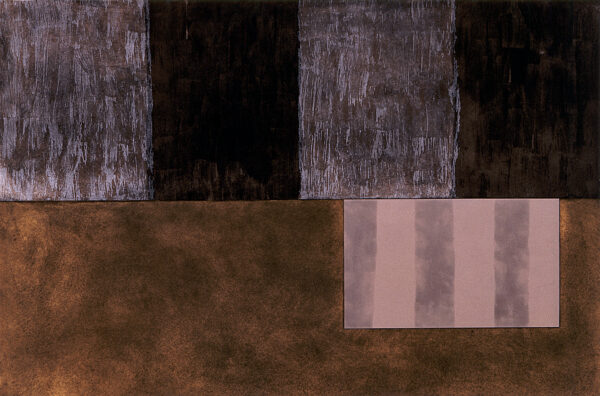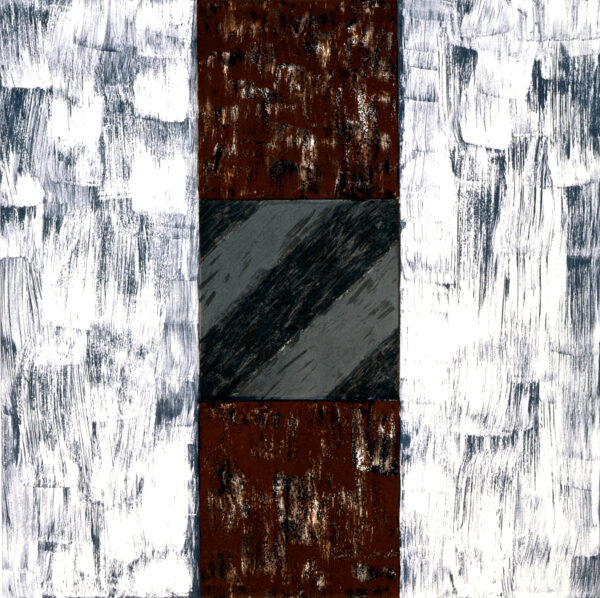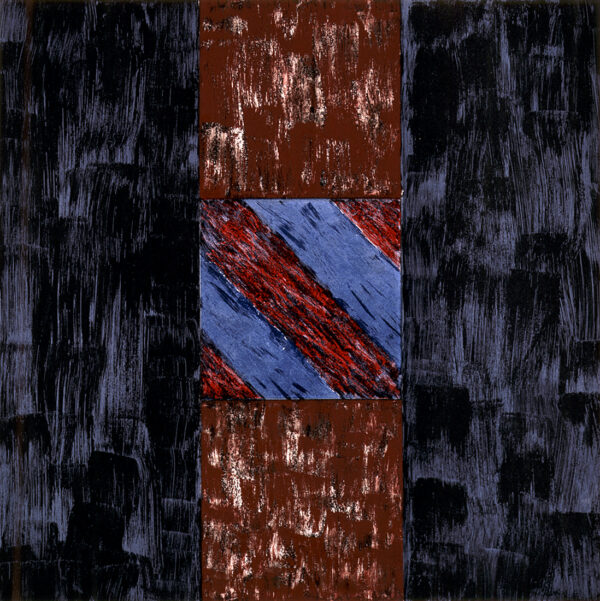“With their grids of stripes and squares, the paintings of Sean Scully resemble playing boards for games not yet invented, or the flags of imaginary countries,” wrote art critic Mark Lawson in The Guardian. “But, though these abstract compositions are no conventional landscapes, his sense of shape and light is influenced by the three places he knows best:” Ireland, London, and New York, where he lives and works today as a U.S. Citizen. Informed early-on by Catholic devotional paintings and later by American Minimalism, Scully is a renowned painter and sculptor who is best known for his geometric abstractions in deep, vibrating hues. “I want, and wanted to, rescue abstraction from remoteness,” Scully has said. “So I made my abstract paintings lurch towards association.” Concrete geometry, loosely layered color, and metaphorical titles activate his compositions and inspire emotions of the human condition.
Both a longtime Londoner and New Yorker, Sean Scully has always identified strongly with being an immigrant. Born on June 30, 1945, in Dublin, he and his family moved to London when he was four years old. He grew up poor in England where he absorbed artworks by attending mass at his family’s local Catholic Church. In his teenage years, he joined a London street gang, protested apartheid in Trafalgar Square, and left school to apprentice at a commercial print shop and graphic design studio. He made his way back to education at age twenty, studying art at Croyden College of Art in London and later at Newcastle University.
In 1967 Scully took a trip to Morocco where he was inspired by the region’s southern light and traditional textiles. The trip was a decisive turning point in his evolution as an artist. He stopped making representational painting, instead introducing brightly colored, hard-edged lines and bands to his compositions. His abstract paintings quickly achieved commercial success in London in the early 1970s. Over the subsequent four decades, a sensitivity to light and dedication to stripes as a formal technique became central elements in his art.
In the mid-1980s, after spending time in New York and Massachusetts on academic fellowships, Scully immigrated to Manhattan. Under the influence of minimalist artist Robert Ryman, his palette harmonized, replacing vivid color with somber, rich tones, and his brushwork loosened. In his on-going Wall of Light series, for example, Scully builds a calming abstract world that breaks down the current idea that walls function solely as dividers. “I am making a wall that is full of shifting relationships,” Scully has said, “that appear and disappear.” He began this series in watercolor form while vacationing in Mexico in the 1980s, and since then it has come to include large-scale oil paintings. As his largest body of work to date, the Wall of Light series balances architectural vocabulary with harmonized color combinations to create universal emotional associations.
In 1988 Scully made five color etchings at Crown Point Press in San Francisco. As Crown Point’s founder Kathan Brown has described, “banded fields are inset with opposing patterns. The prints range from the bold juxtapositions of Wall and Room to the soft harmonies of Sotto Voice.”
Sean Scully has exhibited in North America, Europe, and Asia. Notably in 2014–15 he was the first Western artist to have a major retrospective in China. Covering a fifty-year span of art making, Follow the Heart: The Art of Sean Scully 1964–2014 opened at the Shanghai Himalayas Museum and later traveled to the Central Academy of Fine Arts Museum in Beijing. Other prominent exhibitions of the artist’s work have been held at the Staatliche Kunsthalle Karlsruhe, Karlsruhe, Denmark; Cuadra San Cristóbal, Mexico City, Mexico; and The Marble Palace, State Russian Museum, St. Petersburg, Russia. His work is in numerous public collections, including the Museum of Modern Art, Solomon R. Guggenheim Museum, and The Metropolitan Museum of Art in New York; Corcoran Gallery of Art, Hirshhorn Museum and Sculpture Garden, and The National Gallery of Art in Washington, D.C.; Tate in London; Kunstsammlung Nordrhein-Westfalen in Dusseldorf; and China Central Academy of Fine Arts in Beijing.
Sean Scully was elected a Royal Academician by the Royal Academy of Arts in London, in 2013 and in 2018, he was awarded Honorary Degree of Doctor of Letters by Newcastle University, Newcastle, England. The artist is represented by Lisson Gallery and Cheim & Reid, New York; Kerlin Gallery, Dublin; Kewenig Galerie, Berlin; and Galerie Thaddaeus Ropac, worldwide.
-Katharine Fulton-Peebles, Crown Point Press




